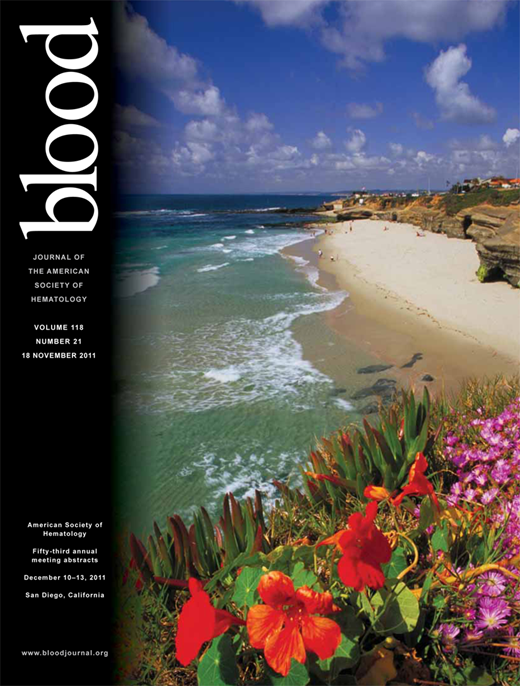Abstract
Abstract 3123
In gene therapy targeting hematopoietic cells, a quantitative assessment of the risk factors underlying insertional mutagenesis is required to assess the practical value of preventive actions. Emanating from an observation of the Copeland lab (Du et al., 2005) we developed an in vitro immortalization (IVIM) assay which determines the risk of transformation of murine bone marrow cells as a consequence of insertional upregulation of Evi1 or Prdm16. These functionally related genes encode master regulators of hematopoiesis which are involved in the pathogenesis of human leukemia and insertional transformation in human gene therapy. Using our standardized conditions, the assay can detect mutants arising with a low frequency (down to 1 in a million cells), based on their rescue and expansion upon replating. The genetic lesion associated with clonal transformation is easily identified, and we can quantify not only the incidence of mutants (number of cells required to form a mutant) but also their fitness (number of subclones obtained by replating).
Using the IVIM assay, our published work has revealed the following: (1) relocating gammaretroviral enhancer-promoter sequences from the LTR to an internal position of a “self-inactivating” (SIN) vector reduces the fitness of mutants, as do mutations in transcription factor binding sites or insulators that reduce the enhancer activity; (2) cellular promoters located in SIN vectors, depending on their enhancer activity, may reduce the risk of transformation below the detection limit (>3 logs compared to standard gammaretroviral vectors); (3) the post-transcriptional regulatory element of the woodchuck hepatitis virus does not affect insertional transformation; and (4) the lentiviral integration pattern reduces the risk of insertional transformation by a factor of ∼3 compared to gammaretroviral vectors.
In the meantime, the assay has been used to assess the transforming potential of new vectors developed to treat a variety of hematopoietic disorders, most notably X-SCID, X-CGD, WAS and globinopathies. Reproducibly we found that vectors containing cellular promoters reduced the risk of insertional transformation when compared to retroviral promoters, although not all cellular promoters appeared to be free of risk.
The assay has also revealed major functional differences of various insulator elements, including synthetic ones designed to block enhancer-crosstalk. Testing a battery of 8 insulators that we obtained from collaborators or designed ourselves, we found that only a subset was potent enough to significantly reduce the transforming potential of a strong retroviral enhancer-promoter.
Furthermore, we assessed the transforming potential of our new alpharetroviral SIN vectors (Suerth et al., JV 2010), modified to remove a residual TATA box of the LTR. When containing a retroviral internal promoter, alpharetroviral SIN vectors were ∼9-times and 3-times, respectively, less likely than the corresponding gammaretroviral and lentiviral constructs to induce strongly replicating clones. Mutants obtained with alpharetroviral SIN vector insertions in Evi1 were not only less frequent but also had a greatly reduced fitness compared to those induced by similarly designed gammaretroviral vectors. Alpharetroviral SIN vectors containing the human elongation factor 1 alpha promoter did not immortalize cells in this assay, as previously shown for gammaretroviral SIN vectors.
Finally, we performed experiments to explore the mechanistic basis of the IVIM assay. Our data suggest that its principle is the selection of mutants that resist the differentiation-inducing effect of a myeloid growth factor cocktail. Therefore, variations of the cell culture conditions have a significant impact on the sensitivity of the assay, and potentially also on the spectrum of mutants that can be isolated. The established conditions typically select for upregulation of Evi1, Prdm16, or, more rarely observed, Ras -related genes.
In summary, the IVIM assay quantifies the risk of insertional mutagenesis in gene therapy, related to vector sequences and integration pattern. It is specifically useful to assess the risk of insertional upregulation of Evi1 and Prdm16 via enhancer-mediated mechanisms, in myeloid progenitor cells. It thus serves as an animal replacement assay to screen for safety-enhancing vector modifications.
Off Label Use: CliniMACS for selection of CD34+ hematopoietic cells.
Author notes
Asterisk with author names denotes non-ASH members.

